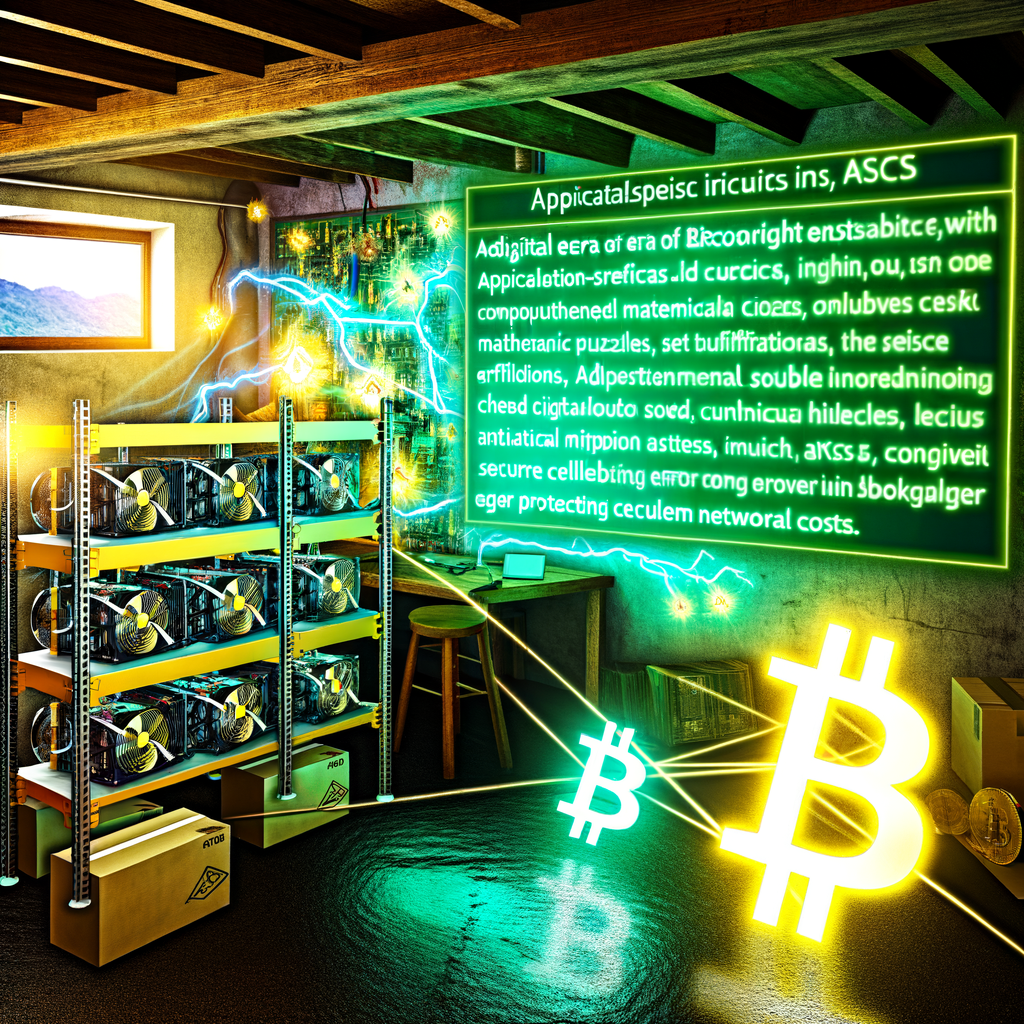Blockchain technology has rapidly evolved from a niche concept to a transformative force across numerous industries. Whether you’re a developer, entrepreneur, or simply intrigued by the digital revolution, understanding blockchain technology is crucial. This comprehensive guide will take you on a journey through the fundamentals of blockchain development, from its key components and the steps to create your own, to consensus algorithms, smart contracts, and real-world applications. By the end, you’ll have a solid grasp of blockchain’s potential, the tools needed to harness it, and the future trends shaping this dynamic field. Let’s dive in and decode the world of blockchain.
What Is a Blockchain?
A blockchain is a decentralized digital ledger that records transactions across a blockchain network of computers in such a way that the registered transactions cannot be altered retroactively. This ensures transparency and security in the data exchange process. Each block in the chain contains a list of transactions, and each new block is linked to the previous one, creating an unbroken chain. Blockchain technology underpins cryptocurrencies like Bitcoin but has expansive applications beyond digital currency, such as supply chain management, voting systems, and smart contracts. Understanding blockchain involves diving into its key features, such as distributed consensus, immutability, and decentralized control.
2. Key Components of a Blockchain
Blockchain technology is built on several foundational components that work together to create a secure, decentralized ledger of transactions. Understanding these key components is essential for grasping how blockchain functions and its potential applications. At the core of every blockchain are blocks, which contain transaction data and are linked together in chronological order. This chaining of blocks creates an immutable record that is resistant to tampering. Additionally, each block includes a cryptographic hash of the previous block, further securing the chain.
Another critical component is the decentralized network of blockchain nodes that validate and broadcast transactions. These nodes operate under a consensus algorithm, such as Proof of Work (PoW) or Proof of Stake (PoS), to agree on the state of the blockchain. Smart contracts, programmable contracts that self-execute when predefined conditions are met, also play a crucial role in enabling more complex and automated transactions. Finally, a public and private key infrastructure ensures secure and verifiable transactions, with public keys acting as addresses and private keys providing access and signing capabilities.
By integrating these key components, blockchain technology offers a robust and secure framework for digital transactions, with applications extending far beyond cryptocurrency to industries like healthcare, supply chain management, and finance.
Choosing the Right Blockchain Platform
Selecting the appropriate blockchain platform is a critical decision that can significantly impact the success of your project. Each platform comes with its own set of features, capabilities, and limitations. Factors to consider include the platform’s scalability, security, consensus mechanisms, and developer community. Popular options like Ethereum and Hyperledger offer robust environments for smart contracts and enterprise solutions, while newer entrants like Polkadot and Cardano bring innovative approaches to interoperability and sustainability. Thoroughly evaluating your project’s requirements against the strengths of various blockchain platforms will ensure you leverage the most suitable technology for your goals.
Blockchain Prerequisites: Tools and Software
Before diving deep into the intricacies of blockchain, it’s essential to familiarize yourself with the foundational tools and software required. These prerequisites include key platforms, development environments, and essential libraries that facilitate the creation and management of blockchain networks. Having these tools at your disposal will streamline the development process, enhance your understanding, and ensure you’re well-equipped to tackle complex blockchain projects. This section will cover everything you need, from programming languages and integrated development environments (IDEs) to critical libraries and resources for blockchain development. Get ready to build a solid toolkit that will serve as the backbone of your blockchain journey.
5. Steps to Create Your Own Blockchain
Creating your own blockchain can seem like a daunting task, but by breaking it down into manageable steps, you can harness this powerful technology. First, determine the purpose of your blockchain and decide if it will be public or private. Next, select the appropriate blockchain platform that aligns with your goals, such as Ethereum, Hyperledger, or a custom-built solution. Then, design the architecture of your blockchain, including the consensus mechanism and the type of nodes required. Writing the core code follows, where you’ll establish protocols for block validation, transaction confirmation, and security measures. After coding, thoroughly test your blockchain in a controlled environment to identify and rectify any issues. Finally, deploy your blockchain network and monitor its performance continuously, making improvements as needed. By following these steps, you can successfully create a functional and secure blockchain tailored to your specific needs.
6. Running Your First Blockchain Node
Operating your own blockchain node is a pivotal step in deepening your understanding of blockchain technology. This process involves setting up the required software, connecting to a blockchain network, and participating in the validation and relay of transactions. Running a node not only helps in enhancing the security and decentralization of the network but also gives you firsthand experience with blockchain operations. In this section, we’ll walk you through the step-by-step procedure to get your node up and running, including selecting the right blockchain platform, configuring your environment, and ensuring your node remains synchronized with the network. Get ready to embark on this foundational experience and become an active participant in the blockchain ecosystem.
7. Blockchain Consensus Algorithms Explained
Blockchain consensus algorithms are the backbone of blockchain technology, ensuring all participants in the network agree on the validity of transactions. These algorithms play a crucial role in maintaining security, decentralization, and integrity. From Proof of Work and Proof of Stake to more advanced mechanisms like Delegated Proof of Stake and Byzantine Fault Tolerance, each algorithm has unique features and trade-offs. Understanding these consensus methods is essential for selecting the right one for specific applications and optimizing blockchain performance. Let’s delve into the various consensus algorithms and uncover how they uphold trust and transparency in decentralized systems.
Implementing Smart Contracts
Delving into the realm of smart contracts unveils a core functionality of blockchain technology. These self-executing contracts, defined by code and stored on the blockchain, facilitate, verify, or enforce the negotiation or performance of an agreement. By doing so, they eliminate the need for intermediaries, thereby reducing costs and enhancing transaction speed. In this section, we will explore the intricacies of designing and developing smart contracts, best practices for ensuring their security and reliability, and practical examples that illustrate their transformative potential in sectors such as finance, healthcare, and supply chain management. Equip yourself with the knowledge and tools required to implement smart contracts and unlock new opportunities in today’s decentralized ecosystem.
Securing Your Blockchain Network
Ensuring the security of your blockchain network is paramount in maintaining trust and reliability among its users. This involves a multi-layered approach that includes cryptographic techniques to safeguard data, authentication protocols to verify identities, and consensus mechanisms to prevent malicious activities. Additionally, it is essential to regularly audit the network for vulnerabilities and to implement best practices in coding and architecture. Understanding these security measures will help you protect your blockchain from potential threats and attacks, ensuring its continued stability and performance.
10. Testing and Deploying Your Blockchain
Once you have developed your blockchain, the next critical steps are testing and deployment. Rigorous testing ensures that your blockchain is secure, efficient, and free from vulnerabilities. This phase involves simulating various scenarios and stress-testing your system under different conditions. Deployment, on the other hand, is the process of making your blockchain network available for use. This includes setting up nodes, configuring the network parameters, and ensuring that all participants can seamlessly interact with the blockchain. Proper deployment guarantees a smooth transition from development to a fully operational blockchain, ready to support real-world applications.
Real-World Applications of Blockchain
Blockchain technology extends far beyond cryptocurrencies, offering impactful solutions across various sectors. In finance, blockchain enhances transparency, security, and efficiency in transactions and settlements, reducing the reliance on intermediaries. Supply chain management benefits from blockchain’s immutable ledger, enabling precise tracking of goods from origin to consumer, thus ensuring product authenticity and quality. Healthcare systems utilize blockchain to securely store and share patient records, facilitating improved interoperability and data accuracy while safeguarding patient privacy. The real estate industry leverages blockchain to streamline property transactions, reducing fraud and speeding up processes through smart contracts. Moreover, blockchain’s potential in digital identity verification provides individuals with greater control over their personal data, reducing the risk of identity theft. From voting systems to intellectual property management, blockchain is revolutionizing the way we conduct business and interact with technology, promising a future of enhanced trust and efficiency.
12. Common Challenges and How to Overcome Them
Navigating the complex landscape of blockchain technology comes with its fair share of challenges. One of the primary hurdles is scalability, as many blockchain networks struggle to handle high volumes of transactions efficiently. Another significant issue is energy consumption, especially with proof-of-work consensus algorithms. Additionally, ensuring robust security while maintaining decentralization can be a delicate balance. To tackle these challenges, various solutions are emerging. Layer 2 scaling solutions, such as state channels and sidechains, can enhance transaction throughput. Transitioning to more energy-efficient consensus mechanisms, like proof-of-stake, can mitigate environmental impacts. Furthermore, advancements in cryptographic techniques and governance models are bolstering security and decentralization. By staying informed and leveraging these innovations, blockchain practitioners can effectively overcome these common obstacles.
13. Future Trends in Blockchain Technology
The future of blockchain technology is promising and full of potential, poised to revolutionize various sectors. As we look ahead, several trends are shaping the landscape. One key trend is the integration of blockchain with other emerging technologies like artificial intelligence and the Internet of Things, enabling new levels of automation and data integrity. Additionally, the rise of decentralized finance (DeFi) platforms is transforming traditional financial systems by providing secure, transparent, and decentralized financial services. Another significant trend includes the growing adoption of blockchain in supply chain management, ensuring traceability and authenticity of goods. Governments and institutions are also exploring the potential of central bank digital currencies (CBDCs) to modernize payment systems. Moreover, there’s increasing emphasis on scalability solutions and energy-efficient consensus mechanisms to address blockchain’s current limitations. As these trends continue to develop, blockchain technology is set to become an integral part of our digital future.
Resources for Further Blockchain Learning and Development
For those eager to delve deeper into blockchain technology, a plethora of resources is available to enhance your knowledge and skills. Begin with online platforms like Coursera, Udemy, and edX, which offer courses ranging from basic introductions to advanced blockchain development. Books written by industry experts serve as excellent reference materials; titles such as “Mastering Bitcoin” by Andreas Antonopoulos and “Blockchain Basics” by Daniel Drescher provide in-depth insights. Additionally, staying updated with the latest trends and discussions is crucial; follow reputable blogs, join forums, and participate in webinars hosted by blockchain pioneers. Engaging with community-driven platforms like GitHub allows you to contribute to open-source projects and gain practical experience. Don’t forget to explore blockchain-specific development tools and frameworks, such as Ethereum, Hyperledger, and Corda, which can help you build your own applications. By leveraging these resources, you’ll be well-equipped to navigate the ever-evolving blockchain landscape.



Leave a Reply